How did Kaitak — the most dangerous airport in the world - appear and why did it disappear
Categories: Aerophoto | Asia | History
By Pictolic https://pictolic.com/article/how-did-kaitak-the-most-dangerous-airport-in-the-world-appear-and-why-did-it-disappear.htmlPeople built airports in the most inappropriate places - among the mountains, in the thicket of the jungle, on coral atolls. But the most dangerous in the history of aviation is considered to be the Kaitak passenger Airport in Hong Kong's Kowloon district. The last airliner left its runway in 1998. And today, looking at the photo, it's hard to believe that such a place could exist.
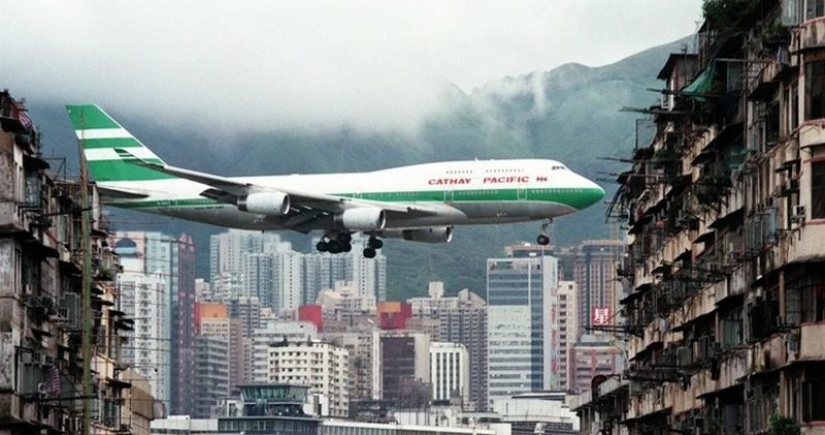
The history of Kaitak Airport began in 1912. It was then that two entrepreneurs, Ho Kai and Au Tak, bought a large plot of land. It was located in the promising, in their opinion, Kowloon district of Hong Kong. But after a while, the landowners realized that they had lost and decided to get rid of the land, which turned out to be in the center of the city slums.
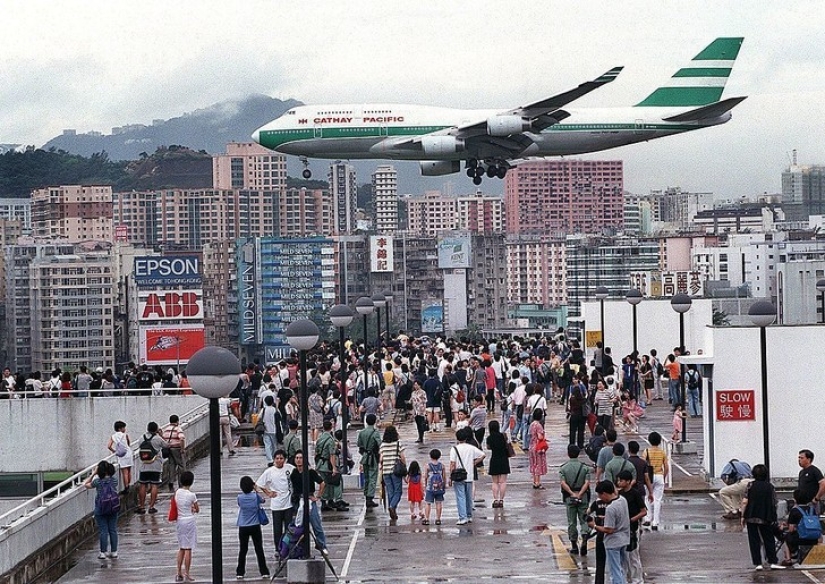
The hapless entrepreneurs were incredibly lucky — the local authorities needed the territory for some kind of airfield. Kai and So got their money and happily left, leaving behind only the name of the site, on which the first runways soon appeared.
The Kowloon airfield offered services to individuals and the military. And in 1924, he even opened the flight school of the Briton Harry Abbott. Everything that was connected with aviation at that time aroused everyone's great interest. And soon several more private flying clubs opened near Kaitak.
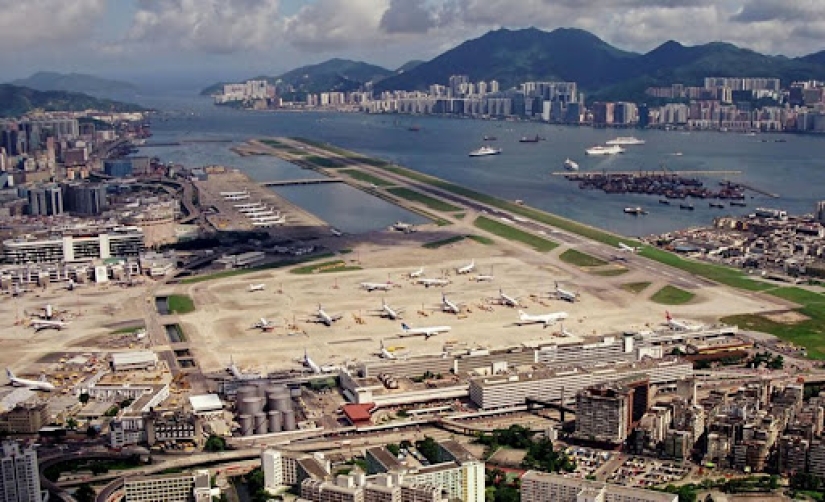
In 1935, the airport got a real control tower. And in 1936, not only pilot training took place here, but also for commercial flights. But Kaitak really flourished during the Japanese occupation. In 1941, the Japanese occupied Hong Kong.
The invaders decided to turn the airfield on the shore into a real big airport. Construction of two long runways began immediately. But due to the lack of space, they had to be moved to the bay.
During the construction, the occupiers shamelessly used the labor of prisoners of war and local residents. In addition, the Japanese took great liberties with the historical heritage of this part of the city. So the ancient Chinese fort of Kowloon was simply dismantled, and its bricks were used in the construction of airport buildings.
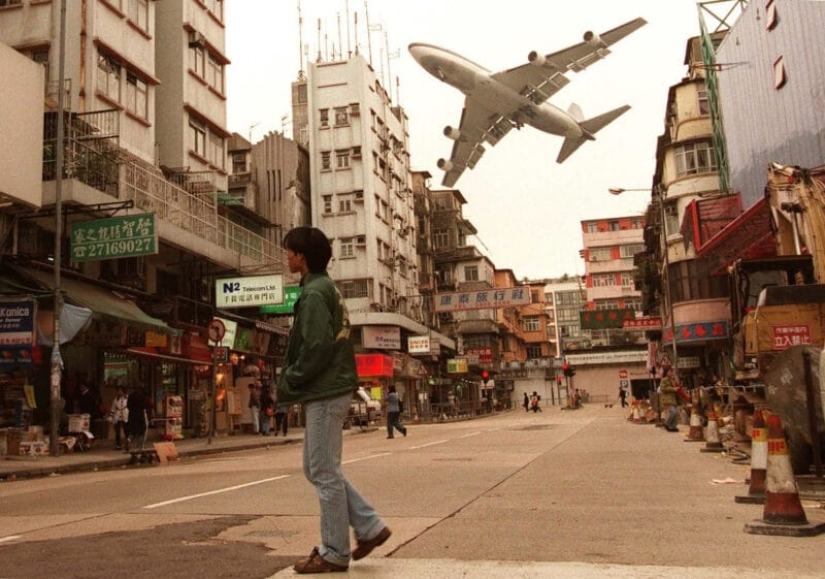
But the Japanese were expelled from China before the Kaitak was ready. Then the construction of the airport was continued by local authorities. In 1957, the lanes were lengthened to 1,664 meters so that they could receive passenger liners. And in 1974 — already up to 3390 meters. In the 1960s, a full‑fledged passenger terminal began operating at the airport.
Kaitak received its proud title of "the most extreme airport in the world" in the early 70s. While the airport was being built, Kowloon was also developing. Gradually, from a backwater suburb, it turned into a not entirely prosperous, but quite urban area. Next to the airport appeared the most infamous in China, and maybe in the world, the fortress city of Kowloon, with the inhabitants of which even the police and the army could not cope.
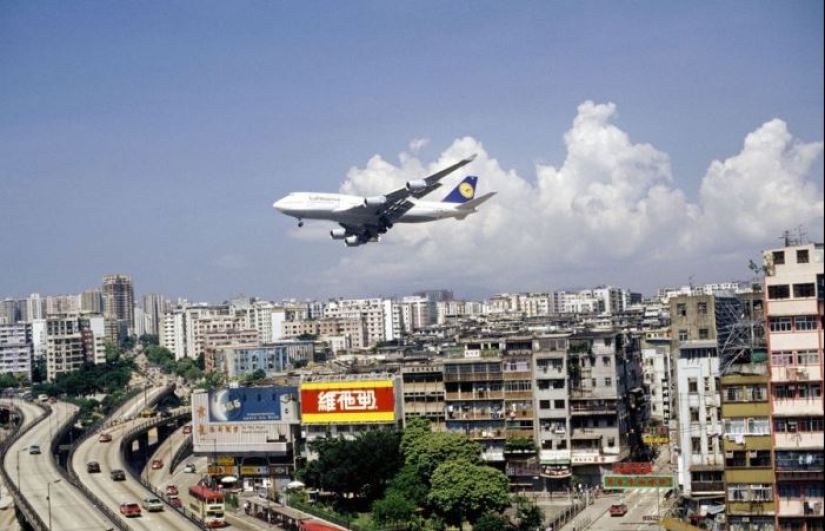
Residential buildings and even skyscrapers were built. They surrounded the strips of the air port from three sides, leaving only the direction from the bay free.
To get to the Kaitaka runway, the pilots had to fly over the roofs of skyscrapers. And then, at a risky altitude of 200 meters, they made a sharp 47-degree turn and entered the landing line at an altitude of only 40 meters.
The strong winds characteristic of the coast did not contribute at all to the accurate work of the pilots. Therefore, we constantly had to make adjustments to weather conditions. The pilots joked that on the approach to the Kaitak you can see what is on TV from the residents of the upper floors. They also said that if a pilot was put on a flight to Kaitak, it means that he is recognized as a real professional.
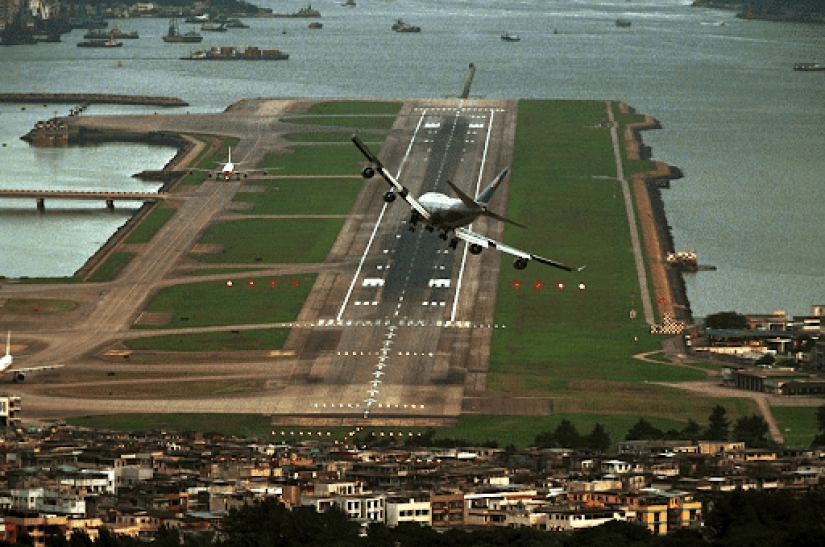
Despite all the difficulties, Kaitak has not become an ominous place of constant plane crashes. Of course, there were accidents, including with human casualties, but they did not happen more often than at any other airport in the world. The most serious tragedy was the fall of the Hercules military transport aircraft, which belonged to the US Navy. The plane crashed on August 24, 1965, immediately after takeoff. Then 59 people died out of 71 present on board.
In the late 80s, Kaitak became a real problem for Hong Kong, or rather, for residents of Kowloon and the surrounding area. Instead of the required 24 million passengers, the air port annually received 29.5 million, becoming the third largest passenger airport in the world. It was decided to close Kaitak, but the city authorities were able to do this only in 1998.
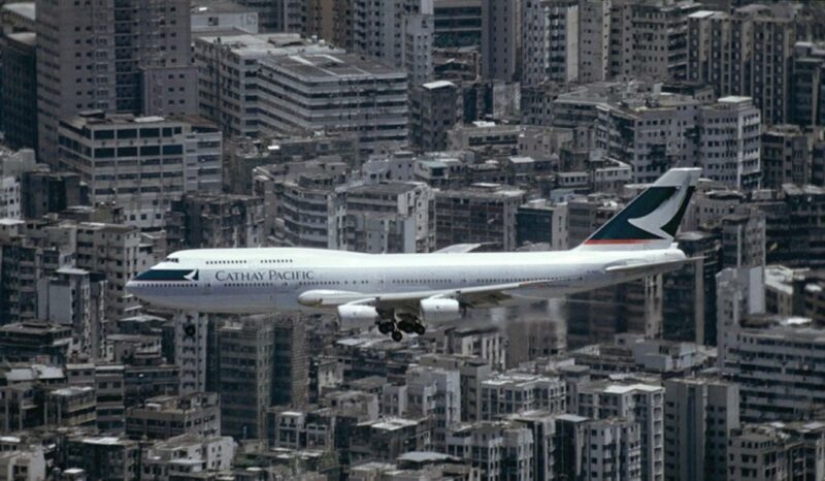
On July 6, 1998, at 00.02, the last airliner belonging to Cathay Pacific Airlines took off from runway 133131. He headed to London Heathrow Airport, and at that time, in the main control tower of Kaitaka, the head of Hong Kong civil aviation said: "Goodbye, Kaitak, and thank you," after which he turned the switch and turned off the runway lights.
From that moment to the present day, all air transportation in Hong Kong is carried out through the comfortable and safe Cheeklapkok Airport, located away from residential areas on the island. Now Kaitak Airport is a large dusty wasteland, on which the ruins of airfield buildings are visible in some places. The former greatness of Hong Kong's first air gate is only recalled by amazing photographs, similar to shots from disaster films or skillful photomontage.
Recent articles

Winter is a special time of the year, someone is afraid of her, someone is waiting for snow days to build a snowman or go down the ...

The heroes of their photos are used to humiliate others, cheerfully and carelessly shoot everything on the phone and post the ...

Every day, photographers around the world are looking for new ways to tell stories or capture something we haven't noticed ...